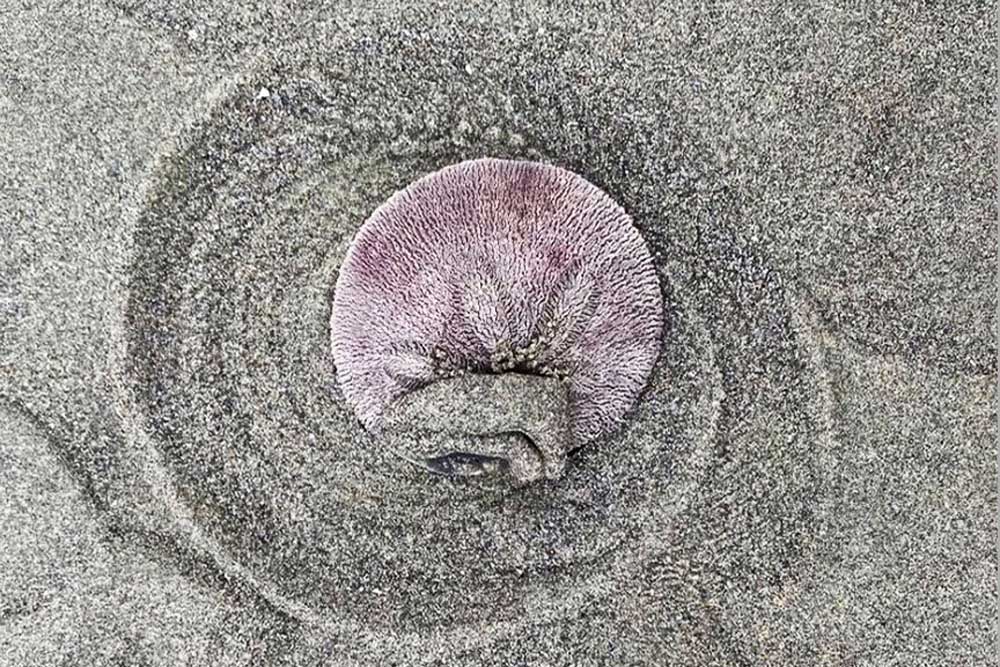In One Ear: Sand dollar dance
Published 12:15 am Thursday, January 16, 2025

- Ear: Sand dollar
“Tiny crop circles made by sand dollars on the beach,” the Seaside Aquarium posted on their Facebook page, describing the photo shown.
“Unlike sea stars and urchins who use tube feet for locomotion, sand dollars use their densely packed spines to scoot across the floor, picking up food particles to eat and grains of sand to weigh themselves down.
“Because sand dollars do not have a way to attach themselves to surfaces (like an urchin and its suction feet), instead they bury themselves under a layer of sand to hide from predators and the relentless current.”
Intrigued, the Ear picked up a few more details from the National Marine Sanctuary Foundation. Sand dollars can’t eat anything larger than they are, and once they do ingest their food, it takes almost two days to digest it. And, to put it delicately, they get rid of the digested byproducts via their mouths.
Sand dollars’ primary predators are sea stars, crabs and medium-sized fish. Despite not being able to escape predators quickly, their maximum lifespan is estimated to be eight and 10 years. (Photo: Seaside Aquarium)





